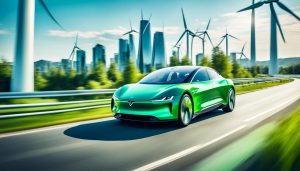Tesla’s China EV Sales Decline: What You Need to Know
Introduction
In recent news, Tesla’s electric vehicle (EV) sales in China have experienced a significant decline of 11%. This has raised concerns among investors and industry experts, as China is the world’s largest EV market. In this article, we will delve into the reasons behind this decline and its potential impact on Tesla’s overall performance. We will also explore the implications for the EV industry as a whole.
The Factors Contributing to the Decline
1. Regulatory Changes
One of the key factors contributing to Tesla’s decline in China is the recent regulatory changes imposed by the Chinese government. These changes include reductions in EV subsidies and stricter emission standards. As a result, the cost of EVs has increased, making them less attractive to potential buyers. Additionally, the government has implemented stricter regulations for EV manufacturers, which may have impacted Tesla’s production and sales in the country.
2. Increased Competition
Another factor that has played a role in Tesla’s sales decline is the increased competition in the Chinese EV market. Several domestic manufacturers have emerged with competitive offerings at lower price points. This has put pressure on Tesla, which has traditionally been positioned as a premium brand. The availability of more affordable options has led some consumers to choose domestic EVs over Tesla.
3. Supply Chain Challenges
Tesla has faced supply chain challenges in China, which have impacted its ability to meet the demand for its vehicles. These challenges include semiconductor shortages and disruptions in the global supply chain due to the ongoing COVID-19 pandemic. These issues have led to delays in production and delivery, which may have affected Tesla’s sales performance in the country.
The Implications for Tesla and the EV Industry
The decline in Tesla’s China EV sales has significant implications for both the company and the broader EV industry.
1. Financial Impact on Tesla
Tesla’s performance in China is crucial for its overall financial success. China has been a major growth driver for the company in recent years, and any decline in sales can have a significant impact on its revenue and profitability. Investors will closely monitor Tesla’s ability to address the challenges in the Chinese market and regain its momentum.
2. Market Sentiment and Investor Confidence
The decline in Tesla’s China EV sales may also impact market sentiment and investor confidence in the EV industry as a whole. Tesla is often seen as a bellwether for the sector, and any negative developments can have a ripple effect on other EV manufacturers. It is crucial for the industry to address the challenges faced by Tesla and demonstrate its resilience in the face of adversity.
3. Opportunities for Competitors
The decline in Tesla’s sales in China presents an opportunity for domestic EV manufacturers to gain market share. These companies can leverage their competitive pricing and local manufacturing capabilities to attract customers who are looking for more affordable options. It remains to be seen how Tesla’s competitors will capitalize on this opportunity and whether they can sustain their growth in the long term.
Strategies for Tesla to Reverse the Decline
To reverse the decline in China EV sales, Tesla can consider implementing the following strategies:
1. Price Adjustments
One approach for Tesla could be to adjust its pricing strategy to make its vehicles more competitive in the Chinese market. This could involve offering lower-priced models specifically tailored to the Chinese market or exploring partnerships with local manufacturers to reduce production costs.
2. Strengthening Local Presence
Expanding its local presence in China can also help Tesla regain its momentum. This could involve increasing manufacturing capacity, improving customer service and support, and establishing stronger relationships with local suppliers and partners. By strengthening its local presence, Tesla can better understand and cater to the preferences and needs of Chinese consumers.
3. Investing in R&D
Investing in research and development (R&D) to develop innovative features and technologies that appeal to Chinese consumers can give Tesla an edge in the market. This could include advancements in battery technology, autonomous driving capabilities, and connectivity features. By continuously innovating, Tesla can differentiate itself from its competitors and attract a larger customer base.
Conclusion
The decline in Tesla’s China EV sales is a significant development that has raised concerns within the industry. While regulatory changes, increased competition, and supply chain challenges have contributed to this decline, Tesla has the opportunity to reverse the trend through strategic initiatives. By adjusting its pricing, strengthening its local presence, and investing in R&D, Tesla can regain its momentum in the Chinese market and reaffirm its position as a leading player in the global EV industry.




